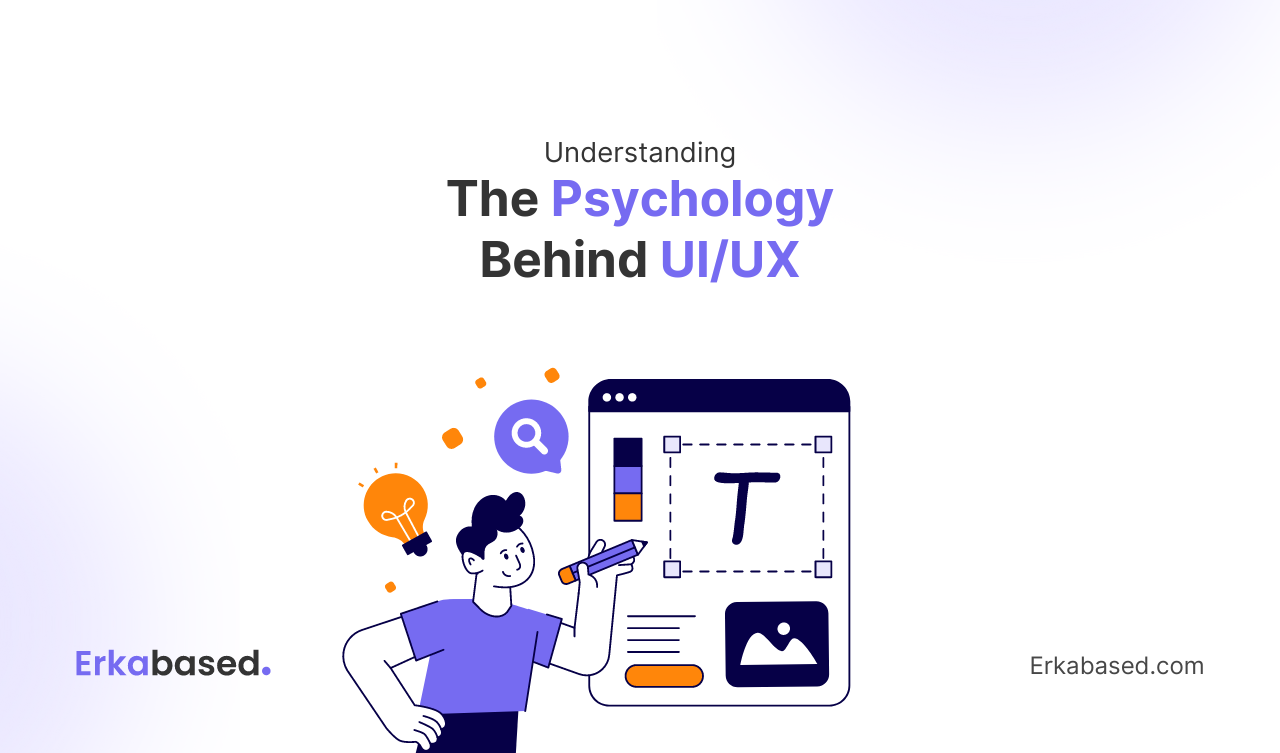Introduction to UI/UX and User Behavior
In the digital age, where websites and apps are a dime a dozen, the role of user interface (UI) and user experience (UX) design has never been more crucial. Beyond aesthetics, these elements significantly influence how users interact with technology and, ultimately, how they feel about it. This blog post explores into the fascinating psychology behind UI/UX design, providing valuable insights for web designers, UX enthusiasts, and digital marketers.
We'll explore fundamental principles, dissect successful designs, and share practical tips on integrating psychological insights into your design process. By the end of this article, you'll understand how design choices can impact user behavior and how to leverage this knowledge to create more engaging and effective digital experiences.
Defining UI/UX: The Basics You Need to Know
What is UI Design?
User Interface (UI) design focuses on the visual aspects of a digital product. It involves crafting the look and feel of a website or app, including layout, color schemes, typography, and interactive elements. The primary goal is to create an aesthetically pleasing and intuitive interface that facilitates seamless user interactions.
What is UX Design?
User Experience (UX) design, on the other hand, concentrates on the overall feel and usability of a product. It encompasses all aspects of a user's interaction with a company, its services, and its products. UX design aims to enhance user satisfaction by improving the functionality, accessibility, and pleasure derived from the interaction.
The Key Differences and Interplay
While UI and UX are distinct disciplines, they are inherently interconnected. UI provides the interface for user interaction, while UX ensures that this interaction is smooth, efficient, and enjoyable. A well-designed UI without a thoughtful UX can result in a visually appealing but frustrating experience. Conversely, a great UX with poor UI can make even the most functional design unattractive. Successful digital products seamlessly integrate both elements.
The Psychological Fundamentals at Play in UI/UX Design
Cognitive Load: Simplifying User Decisions
Cognitive load refers to the amount of mental effort required to process information. In UI/UX design, minimizing cognitive load is essential to prevent user overwhelm and frustration. Research shows that users prefer interfaces that present information clearly and concisely, allowing for quick and intuitive decision-making.
Designers can reduce cognitive load by adopting simplicity and consistency. Clear navigation, minimalistic design, and logical information hierarchy help users accomplish tasks efficiently. For instance, using familiar icons and standard layouts reduces the learning curve and enhances user satisfaction.
The Impact of Colors, Fonts, and Visual Elements
Color psychology plays a significant role in influencing user emotions and behaviors. Different colors evoke various feelings and can be strategically used to guide users through a digital experience. For example, blue is often associated with trust and reliability, making it a popular choice for financial institutions, while red can create a sense of urgency, useful in call-to-action buttons.
Typography also affects readability and user engagement. A well-chosen font can convey a brand's personality and improve the overall user experience. Serif fonts, like Times New Roman, often appear traditional and trustworthy, while sans-serif fonts, like Arial, offer a modern and clean look.
Visual elements, such as images and videos, should be used properly. They can enhance understanding and retention but must be relevant and high-quality to avoid clutter and distraction.
User Emotions and Their Influence on Interactions
User emotions are powerful drivers of behavior and can significantly impact how users interact with a digital product. Positive emotions, such as joy and satisfaction, can lead to prolonged engagement and higher conversion rates. Conversely, negative emotions, such as frustration and confusion, can result in user abandonment.
Designers can harness emotional design by incorporating elements that evoke positive feelings. Personalized experiences, intuitive feedback, and delightful micro-interactions contribute to a more enjoyable user journey. Understanding and empathizing with user emotions enable designers to create experiences that resonate on a deeper level.
Case Studies and Examples
Analyzing Successful UI/UX Designs
One exemplary case is Airbnb, whose UI/UX design effectively balances simplicity and functionality. The use of high-quality images, intuitive navigation, and personalized recommendations creates an engaging and user-friendly platform. The psychology behind its success lies in its ability to make users feel comfortable and excited about their travel plans.
Another notable example is Apple's website and product design. Apple's minimalist approach, consistency, and attention to detail create a seamless and aesthetically pleasing experience. The strategic use of white space, clear typography, and cohesive visual elements contribute to a sense of sophistication and trust.
Common UI/UX Mistakes and Psychological Corrections
A common mistake in UI/UX design is overwhelming users with too much information or too many choices. This can lead to decision paralysis and frustration. Applying Hick's Law, which states that increasing the number of choices increases decision time, can help designers streamline options and guide users toward desired actions.
Another pitfall is inconsistent design. Users appreciate predictability and familiarity. Inconsistent layouts, navigation, or visual elements can confuse users and diminish their confidence in the product. Ensuring design consistency across all touchpoints fosters a sense of reliability and professionalism.
Using dark patterns, or manipulative design tactics, can also harm user trust. Techniques like hidden costs or misleading buttons may achieve short-term gains but damage long-term relationships. Ethical design practices prioritize transparency and user well-being, fostering trust and loyalty.
Practical Applications for Web Designers
Integrating Psychological Insights into Your Design Process
Web designers can enhance their work by integrating psychological principles into their design process. Start by conducting user research to understand your audience's needs, preferences, and pain points. This data-driven approach allows you to create designs that resonate with users on a psychological level.
Prototyping and user testing are crucial steps in refining your designs. Gather feedback early and often to identify areas for improvement and ensure your design aligns with user expectations. Iterative design processes help create products that are both functional and emotionally engaging.
Tools and Resources for Better Understanding User Behavior
Several tools and resources can aid designers in understanding user behavior and incorporating psychological insights into their work. Heatmaps, such as Hotjar or Crazy Egg, provide visual representations of user interactions, helping designers identify areas of interest and potential pain points.
User testing platforms like UserTesting and Optimal Workshop offer valuable insights into how users navigate and interact with your designs. These platforms facilitate remote usability testing, enabling designers to gather feedback from diverse user groups.
Additionally, resources like the Nielsen Norman Group and Interaction Design Foundation provide valuable articles, courses, and case studies on UI/UX design and psychology. Staying informed about industry trends and best practices empowers designers to continually improve their craft.
Conclusion
Understanding the psychology behind UI/UX design is the ultimate edge in creating digital products that delight and engage users. By leveraging cognitive principles, emotional design, and psychological insights, designers can craft experiences that resonate deeply with users.
Whether you're a web designer, UX enthusiast, or digital marketer, incorporating these principles into your work will enhance user satisfaction, drive engagement, and ultimately contribute to the success of your digital products. Remember, great design goes beyond aesthetics – it's about understanding and meeting the needs of your users, making their journey as seamless and enjoyable as possible.
Erkabased crafts user-centric websites that deliver results. Our approach combines aesthetics with functionality, prioritizing user research and intuitive design for optimal usability and increased conversions. We don't just build websites; we create engaging digital experiences that resonate with users and enhance brand loyalty.



